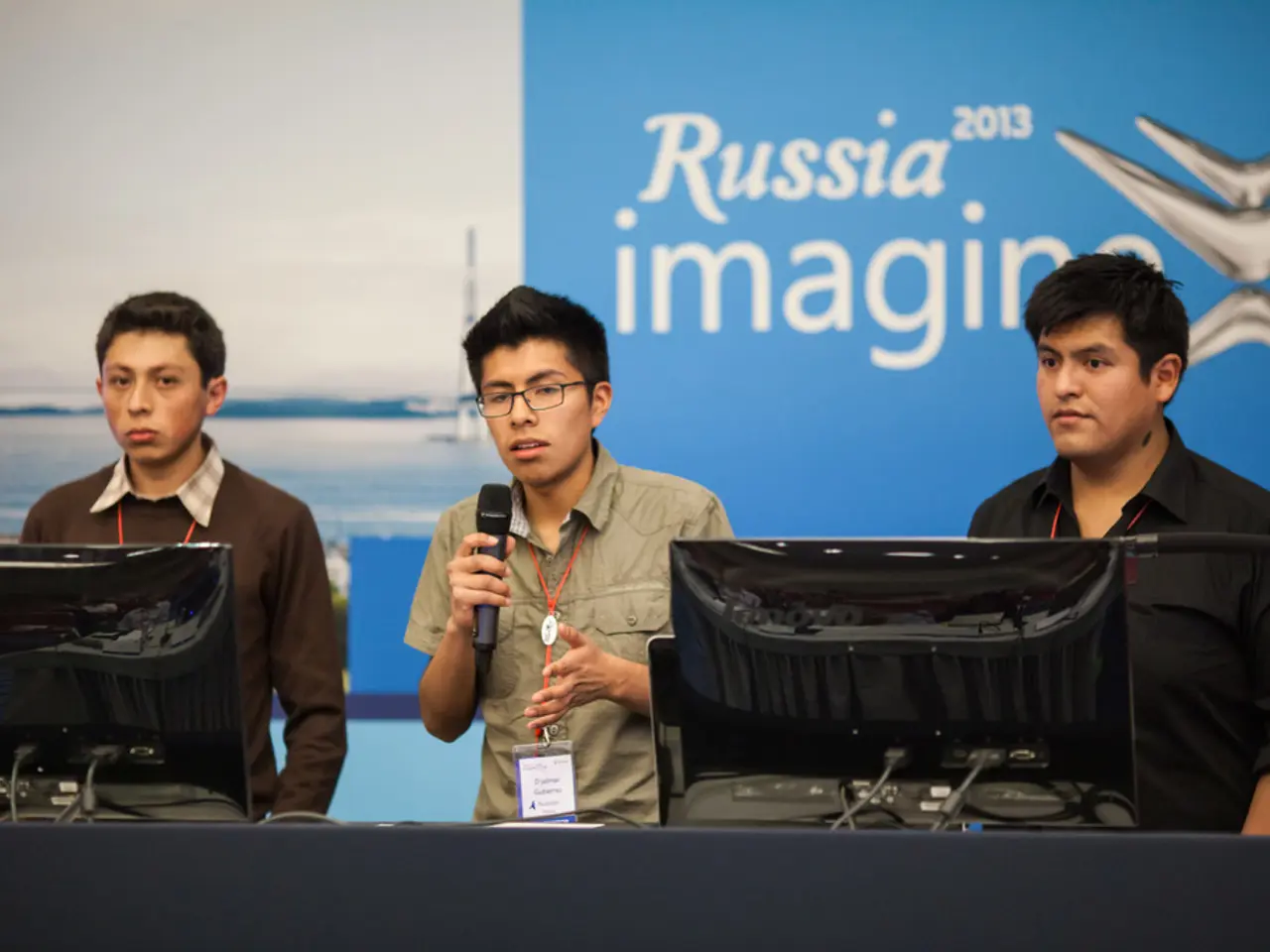Space-age Robotic Aides for Pioneering Deep-space Expeditions
Robotic Assistants Pioneer a New Era in Deep Space Exploration
Robotic assistants, such as NASA's Astrobee system, are revolutionizing the way deep space is explored, amplifying propulsion technologies, boosting research on possible habitable exoplanets, and combating the challenges of lengthy space travel.
Advancing Propulsion and Space Mobility
NASA's Astrobee system, small, cube-shaped robots propelled by electric fans in zero-gravity conditions, demonstrate remarkable innovation. They can navigate autonomously or be remotely controlled, using arm-like manipulators for hopping or self-tossing maneuvers, extending their range and adaptability beyond traditional thrusters [1, 2, 3]. The potential applications of this propulsion technology could range from enhancing the agility of robotic vehicles on interplanetary missions, to assisting astronauts during extravehicular activities or conducting on-orbit assembly.
Deepening Scientific Discoveries in the Cosmos
Robotic assistants serve as invaluable scientific partners, particularly aboard the International Space Station (ISS), where Astrobees autonomously record experiments, inventorytake, and even conduct research [2, 5]. Future improvements will equip these robots with modular tools and advanced sensors, allowing them to examine exoplanet atmospheres, soil composition, and environmental conditions remote or in situ [5, 6]. Their ability to tolerate extreme environments and microgravity positions them as ideal explorers of moons, asteroids, and planets where human presence is scarce or risky.
Overcoming the Effects of Extended Space Travel
Extended space missions subject astronauts to physical and psychological stressors, but robotic assistants can alleviate these concerns by assuming repetitive and potentially hazardous tasks, thus reducing the human workload and risk [5, 7]. Projects such as NASA's Integrated System for Autonomous and Adaptive Caretaking (ISAAC) are training robots to independently maintain spacecraft, carry out repairs, and manage experiments when human presence is intermittent or sparse [5]. Furthermore, robots with machine learning can monitor spacecraft systems and environmental conditions, predicting and averting equipment failures that could threaten crew well-being.
A Sight on the Future: Humanoids, Soft Robotics, and AI Collaboration
As the future unfolds, humanoid robots designed to perform intricate tasks traditionally handled by humans could become standard crew members on deep space missions, working alongside astronauts or independently in dangerous environments [5, 6]. Soft robotics, robots constructed from flexible materials, offer capabilities for navigating tight spaces and executing delicate operations, complementing the rigidity of conventional robotic systems. Advances in artificial intelligence will equip these robots with improved decision-making abilities, adaptability in unexpected situations, and more natural human-robot interactions, essential for long-duration missions far from Earth [5, 6, 8].
In Conclusion
Robotic assistants are vital collaborators in humanity's venture to probe the cosmos. By developing advanced propulsion methods, facilitating scientific research on distant worlds, and supporting crew health and safety during extended missions, these robots are charting a path for faster, safer, and more productive deep space exploration. As autonomy and artificial intelligence develop, robotic assistants will increasingly hold the key to interplanetary travel, aiding us in understanding the mysteries of potentially inhabitable exoplanets, and safeguarding the well-being of human explorers delving into the final frontier.
Noteworthy developments in NASA's Astrobee system and other robotic assistants include:
- Astrobee-REACCH: This robotic arm system is designed to grasp and reposition objects, showcasing substantial advancements in grasp and maneuver capabilities. Using tentacle-like arms with adhesive pads, it can handle objects with varying geometries and surface materials, significantly contributing to addressing orbital debris removal, satellite servicing, and orbit change maneuvers, thereby prolonging satellite lifespans and safeguarding assets in low Earth orbit [1, 2].
- Operational Flexibility: Astrobee robots can perform routine tasks autonomously, such as maintaining equipment and conducting scientific experiments. This flexibility is indispensable for long-duration missions where human resources are limited [5].
- Impact on Scientific Research: Technologies like OPTICA improve the transmission of high-resolution imagery from space to Earth by advancing data compression and analysis, enhancing real-time monitoring and aiding disaster response efforts [1].
- Human Health and Long-Duration Missions: NASA is researching innovative propulsion technologies, such as converting heat into electricity using Stirling engines. These systems could power future missions into new space frontiers [4]. The establishment of lunar or Mars bases would require robotic systems for assembly, maintenance, and resource utilization.
NASA's Astrobee system and other robotic assistants are instrumental in transforming deep space exploration by advancing operational capabilities, deepening scientific research, and supporting crew health during long-duration missions.
- The development of autonomous robotic assistants, like NASA's Astrobee system, is revolutionizing deep space exploration through their potential to innovate propulsion technologies, such as Stirling engines, enabling longer space missions and the establishment of lunar or Martian bases.
- Astrobee robots, equipped with advanced sensors and modular tools, are leading the way in deepening scientific research in space, with their ability to examine exoplanet atmospheres, soil composition, and environmental conditions, even in extreme remote or in-situ environments, aiding in the discovery of potentially habitable alien worlds.




